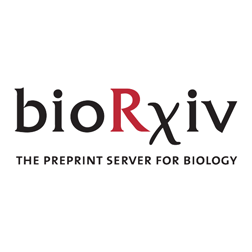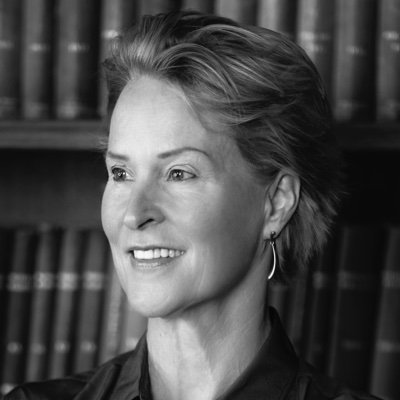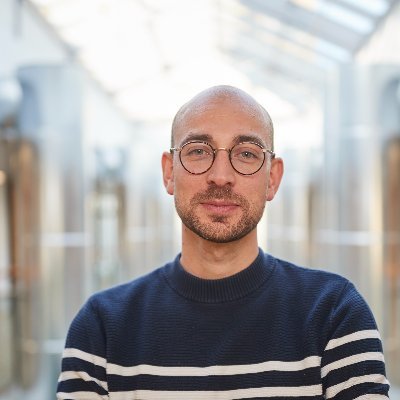
Manu Saraswat
@manusaraswat10
Followers
882
Following
10K
Media
82
Statuses
844
Post-doc at Dana Pe'er and Oliver Stegle labs at MSKCC and DKFZ | interested in ML and 🧬 Previously @genentech , @UBC and @bitspilanigoa (he/him)
Heidelberg, Germany
Joined August 2014
🧠 Excited to share my main PhD project! We mapped the regulatory rules governing Glioblastoma plasticity using single-cell multi-omics and deep learning. This work is part of a two-paper series with @bayraktar_lab , @OliverStegle and @MoritzMall groups. Preprint at end🧵👇
8
64
309
Visiting the Bay area this week for the @scverse_team conference. Looking forward to hearing more about the developments in single cell world and sharing the excitement about #AIxBio with the community
0
0
2
I happened to read @manusaraswat10 's EPIC supplement from his scDORI preprint. It is probably the best & most comprehensive methods section I have ever read & written with a goal to help readers of all background understand it. Fabulous! https://t.co/7Z3rZVETXt
biorxiv.org
Glioblastoma (GB) is one of the most lethal human cancers, marked by profound intratumoral heterogeneity and near-universal treatment resistance. Cellular plasticity, the capacity of cancer cells to...
1
9
89
Excited to be at #ASHG2025 in Boston next week. On Thursday, I will be presenting a poster (1007T) on our latest work on Personalised sequence to expression modelling. Looking forward to meeting new folks and reconnecting with old friends and colleagues.
0
0
1
Truly inspiring talk! What an absolute privilege to hear
Speaking under the gaze of the emperor. Haven't done that before...lovely to be in #Vienna.
0
0
2
Excited to be at AITHYRA #AIinLifeScience symposium in Vienna. What a gorgeous venue Will be presenting posters on my latest work on personalized gene expression prediction and gene regulatory network inference
0
0
1
Dived into past, present & future of human genetics with brilliant students & mentors. Grateful for the chance to present my work on personalized sequence→expression prediction and discussions with @SashaGusevPosts @bpasaniuc @markmccarthyoxf @mashaals @tuuliel & many others
Leena Peltonen School of Human Genetics in full-swing! @beryl_bbc @GosiaTrynka @dgmacarthur @bpasaniuc @tuuliel @hilsomartin @jacquesfellay @markmccarthyoxf @MT_Genetics @SashaGusevPosts @zkutalik @mashaals @AleMedinaRivera
0
1
13
Exciting times
Happy to introduce AlphaGenome, @GoogleDeepMind's new AI model for genomics. AlphaGenome offers a comprehensive view of the human non-coding genome by predicting the impact of DNA variations. It will deepen our understanding of disease biology and open new avenues of research.
0
0
3
Excited to share my first contribution here at Illumina! We developed PromoterAI, a deep neural network that accurately identifies non-coding promoter variants that disrupt gene expression.🧵 (1/)
2
29
111
@bayraktar_lab Thread from @bayraktar_lab
How does tumour heterogeneity arise? How can we predict cancer cell plasticity? In 2 studies, we trace #glioblastoma heterogeneity to a spatial cancer cell trajectory w. atlassing https://t.co/OY9T4rHYrj & predict plasticity w. snRNA/ATAC+deep learning https://t.co/AwlOHu3cq6 🧵
0
0
1
Thanks to all our collaborators- specially Laura (co-lead on computational analysis) and Elisa, Tannia and Fani (lead on experimental data) Thanks to funding agencies who made this work possible and the patients for agreeing to donate samples.
0
0
4
15/ We believe this approach can be applied to other cancers to uncover—and exploit—plasticity brakes. Get in touch if interested! #GBM #MultiOmics #CancerResearch #deeplearning #cancerneuroscience #GRNs #singlecell #Cancer
1
1
5
14/ Want to learn more? Read our regulatory paper https://t.co/iNNiysSav4 and companion spatial multi-omics study https://t.co/rO7TcIRXJn Watch out for a separate 🧵from @bayraktar_lab on conserved spatiotemporal trajectories in GB
biorxiv.org
Glioblastoma (GB) is one of the most lethal human cancers, marked by profound intratumoral heterogeneity and near-universal treatment resistance. Cellular plasticity, the capacity of cancer cells to...
2
5
12
13/ Our framework unifies regulatory and spatial logic of GB heterogeneity. While our companion paper showed subclones are intermixed across conserved tissue niches, our regulatory model explains WHY—they follow the same trajectory because they're constrained by the same rules!
1
0
4
12/ Beyond chromatin changes, MYT1L transformed GB cells into less aggressive neuronal-like cells with: • Enhanced neurite-like morphology • Reduced tumor microtube connectivity • Decreased proliferation • In vivo: slower growth, less invasion, longer survival!
1
0
3
11/ Our experimental validation was striking• MYT1L overexpression closed >80% of differential chromatin regions • MYT1L knockout reopened access to plastic fates • MYT1L directly binds and represses regulators of other states •85% of scDORI's predicted target TFs confirmed!
1
1
7
10/ 🔥 Can we use these GRNs to manipulate tumor identity and push GB cells into less plastic states? YES! We predicted MYT1L as the key regulatory bottleneck- a master repressor that locks cells into neuronal-like states by directly repressing regulators of plastic states.
1
0
7
9/ Remarkably, our regulatory roadmap explains tumor architecture! States with easy transitions exist in close spatial proximity, while states separated by regulatory barriers are spatially distant. The regulatory rules we've uncovered directly shape how tumors are organized!
1
1
4
8/ This roadmap revealed striking asymmetry in GB plasticity: • OPC/NPC-like and AC-like states can easily activate multiple alternate fates • Neuronal-like states are "locked" by strong repression barriers • Transitions follow preferred directions
1
0
3
7/ 🔑 The big question: Which tumor states can easily transition to others? We developed metrics to quantify both activation potential (what enables transitions) and repression barriers (what prevents them), creating the first regulatory roadmap of GB plasticity.
1
1
4
6/ The power of multi-omics: We can distinguish what a cell IS versus what it COULD BECOME. While only 16% of Topic Regulators are expressed across different tumor states, over 54% are epigenetically accessible—revealing "primed drivers" ready for activation during transitions!
1
1
7








